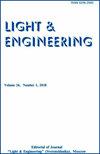被动式太阳能建筑墙体能源效率的初步评价
IF 0.3
4区 工程技术
Q4 ENGINEERING, ELECTRICAL & ELECTRONIC
引用次数: 1
摘要
被动式利用太阳能冬季为建筑供暖,夏季为建筑制冷,是一种环保有效的建筑运行节能方式。在不同的国家,特别是在中纬度地区,(30 - 40%)%的热能和电能用于建筑物的供暖和制冷。因此,利用像太阳这样取之不尽的能源是有意义的。本文提出了一种初步评估不同气候条件下Trombe墙体能源效率的方法,该方法基于对一年中的过渡时期(春季-秋季)这些结构的能量分析,在此期间Trombe墙体的工作是最有效的。在夏季,由于“烟囱”效应,这些结构可以用来激活空气交换,从阴凉和凉爽的区域吸引冷空气。在寒冷的冬季和夜晚,当没有太阳时,Trombus的墙壁充当缓冲区,减少封闭结构的温度负荷。这些积极的品质是额外的,增加了这些结构的能源效率。在这种方法中,它们没有被考虑在内。最大的效果是在过渡时期实现的。本文分析了在中国东北季风气候地区(哈尔滨和沈阳)以及俄罗斯远东类似气候地区(哈巴罗夫斯克和符拉迪沃斯托克)使用Trombe墙的节能计算模型的结果,这些地区位于中国考虑的城市的纬度。研究表明,在这些地区,在过渡时期使用特隆贝墙进行供暖的效率可高达(10-15)%。在初步设计和决策阶段,确定Trombe墙体使用能源效率的方法可用于确定其在各种气候区域使用的可行性。本文章由计算机程序翻译,如有差异,请以英文原文为准。
Preliminary Assessment of the Energy Efficiency of theTrombe Walls in Buildings with Passive Use of Solar Energy
Passive use of solar energy for heating buildings in winter and cooling buildings in summer is an environmentally friendly and effective way to save energy in the operation of buildings. In different countries, especially in the middle latitudes, (30–40)% of thermal and electrical energy is consumed for heating and cooling buildings. Therefore, the use of such an inexhaustible source of energy as the sun is relevant. The method of preliminary assessment of the energy efficiency of Trombe walls for buildings in different climatic conditions, based on the energy analysis of the work of these structures in the transition periods of the year (spring – autumn), when the work of the Trombe walls is most effective, is presented. In summer, these structures can be used to activate air exchange with the drawing of cool air from shady and cool areas due to the “chimney” effect. On cold winter days and at night, when there is no sun, the walls of the Trombus act as buffer zones that reduce the temperature load on the enclosing structures. These positive qualities are additional, increasing the energy efficiency of these structures. They are not taken into account in this method. The maximum effect is achieved during the transition period. The results of computational modelling of energy savings due to the use of Trombe walls in areas with a monsoon climate in north-eastern China (Harbin and Shenyang), as well as similar climate areas of the Russian Far East (Khabarovsk and Vladivostok), located at the latitude of the cities under consideration in China, are analysed. It is shown that the efficiency of the use of Trombe walls in the transition period for heating can be up to (10–15)% in these areas. The method of determining the energy efficiency of the use of Trombe walls can be used to determine the feasibility of their use in various climatic regions at the stage of preliminary design and decision-making.
求助全文
通过发布文献求助,成功后即可免费获取论文全文。
去求助
来源期刊

Light & Engineering
ENGINEERING, ELECTRICAL & ELECTRONIC-OPTICS
CiteScore
1.00
自引率
50.00%
发文量
0
审稿时长
1 months
期刊介绍:
Our magazine
develops comprehensive communication within the lighting community, providing opportunities for discussion and free expression of opinions of specialists of different profiles;
contributes to the convergence of science and engineering practice, the search for opportunities for the application of research results in lighting and technological applications of light;
keeps the scientific community up to date with the latest advances in the theory of the light field, providing readers with operational professional information;
initiates international cooperation, promotes and distributes the results of Russian authors in the international professional community;
provides equal opportunities for authors from different regions of Russia and other countries.
The journal publishes articles in the following areas:
visual and non-visual effects of radiation on humans;
light field theory;
photometry and colorimetry;
sources of light;
ballasts;
light devices, their design and production technology;
lighting and irradiation installation;
light signaling;
methods of mathematical modeling of light devices and installations;
problems of energy saving in lighting, installation and operation of lighting installations;
modern production technologies of lighting products for lighting control systems;
innovative design solutions;
innovations in lighting and lighting design;
the study of the effect on plants and animals, problems of using light in medicine;
problems of disinfection of premises, water and smell elimination with the help of technology of UV radiation using;
problems of light in the ocean and space.
 求助内容:
求助内容: 应助结果提醒方式:
应助结果提醒方式:


